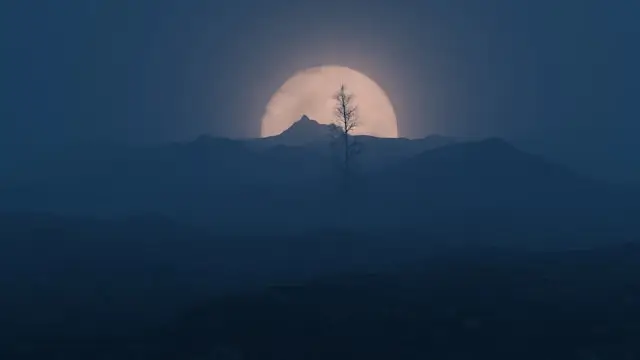Spiritual Wisdom from the World’s Great Mystics: Lessons for the Modern Seeker
Why the Mystics Still Speak to Us Today
In every culture, across centuries, mystics have been voices of depth and clarity. They lived not in ivory towers, but in the messy realities of human life—yet they saw through it to a deeper truth.
From the poetry of Rumi to the visions of Teresa of Ávila, their words remain startlingly fresh. They remind us that spirituality is not an abstract philosophy but a lived experience: a way of moving through life with openness, presence, and love.
Today, when our attention is scattered and our pace relentless, the mystics offer not relics of the past but living guides for seekers of all kinds.
Lesson One: The Language of the Heart (Rumi)
The 13th-century Sufi poet Rumi continues to be one of the best-selling poets in the world. His central message? Love is the bridge between the human and the divine.
“Your task is not to seek for love, but merely to seek and find all the barriers within yourself that you have built against it.” — Rumi
Modern seekers often approach spirituality through intellect, books, or practices. Rumi gently redirects us: start with the heart. The mystic’s wisdom is that love—unconditional, expansive, and not bound by ego—is the key to transformation.
Practical application: Journalling on the barriers we hold against love (resentments, judgements, self-criticism) can be a powerful way to live Rumi’s insight in everyday life.
Lesson Two: The Interior Castle (Teresa of Ávila)
The 16th-century Spanish mystic Teresa of Ávila described the soul as an “interior castle” with many rooms. The journey of life is to move from the outer chambers (surface distractions, external desires) to the innermost chamber, where God dwells in union with the soul.
For the modern seeker, Teresa’s imagery is a reminder of depth. Spiritual growth is not about collecting quick experiences but about moving inward, step by step, into stillness and intimacy with the sacred.
Practical application: Daily meditation or contemplative prayer can be seen as taking another step into your interior castle. Even five minutes of silence helps cultivate that inner intimacy.
Lesson Three: Letting Go into the Ground of Being (Meister Eckhart)
Meister Eckhart, the German Dominican friar and philosopher, taught radical detachment. He spoke of “Gelassenheit”—a letting-be or letting-go into the divine ground of all things.
Rather than clinging to success, identity, or even spiritual achievement, Eckhart advised a profound surrender: “The eye with which I see God is the same eye with which God sees me.”
Practical application: Try a simple mindfulness practice of observing thoughts as they arise without clinging. Notice the relief in loosening your grip. This aligns with modern neuroscience findings: practices of non-attachment reduce stress and improve emotional regulation .
Lesson Four: The Universal Christ (Julian of Norwich)
Julian of Norwich, a 14th-century English anchoress, experienced visions during a severe illness. Her words still echo with tenderness and hope:
“All shall be well, and all shall be well, and all manner of thing shall be well.”
For seekers today, Julian’s insight is a balm in times of anxiety and uncertainty. She reframes suffering not as punishment but as part of a larger divine unfolding.
Practical application: Repeating Julian’s words as a breath prayer can be grounding: inhale “All shall be well,” exhale “all manner of thing shall be well.”
Lesson Five: The Still Point of the Tao (Lao Tzu)
Turning to the East, the Tao Te Ching of Lao Tzu offers a different mystical path: alignment with the Tao, the natural flow of life.
“Be still like a mountain and flow like a great river,” the Tao Te Ching advises.
For modern seekers caught in striving, this wisdom is deeply countercultural. It reminds us that true strength lies in softness, that surrender to the flow is not weakness but alignment with the deepest rhythms of life.
Practical application: Walking meditation outdoors can awaken awareness of the Tao—simply notice the way trees grow, rivers move, or clouds pass, and feel your own life flowing in harmony.
Why Mystics Still Matter in a Secular Age
You might wonder: what do medieval nuns, Sufi poets, and Taoist sages have to do with our world of smartphones and deadlines?
The answer lies in human universals. Neuroscience suggests practices like meditation and prayer activate brain regions linked to compassion, creativity, and well-being . Mystics, centuries ago, discovered these truths experientially. Their words endure because they speak to a human longing that is timeless: to belong, to awaken, to rest in something larger than ourselves.
FAQ: Spiritual Wisdom from the Mystics
Q: What is a mystic?
A mystic is someone who seeks direct experience of the divine or ultimate reality, beyond doctrines or rituals.
Q: Do you need to belong to a religion to learn from mystics?
No. While many mystics arose from religious traditions, their insights often transcend boundaries and can be practised by anyone.
Q: How can I start exploring mystic wisdom today?
Begin small: read a few verses from Rumi, spend five minutes in silence, or repeat Julian’s mantra “All shall be well.” The path unfolds gradually.
Final Reflection: Walking with the Mystics
Mystical wisdom is not meant for a select few saints—it is a shared human inheritance. The mystics point us back to the same truth: the divine is not distant but within us, around us, and flowing through all life.
For the modern seeker, their lessons are both grounding and liberating. They remind us that spiritual growth is not about escaping life, but about entering it more deeply—with love, surrender, and awareness.
Additional Resources
Why not treat yourself to a Meditation Retreat in the beautiful Devon Countryside?
This post may also interest you: Wisdom Beyond Words
Mystic teachings that may interest you: Ted Nottingham: Spiritual teacher | Author | Publisher
Best Wishes,
David.
© D. R. Durham, All rights reserved, 2025.




